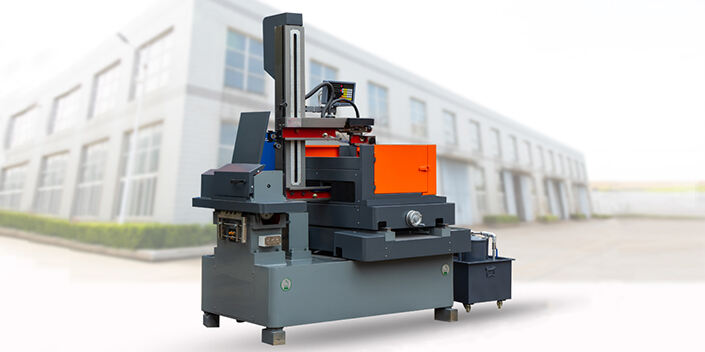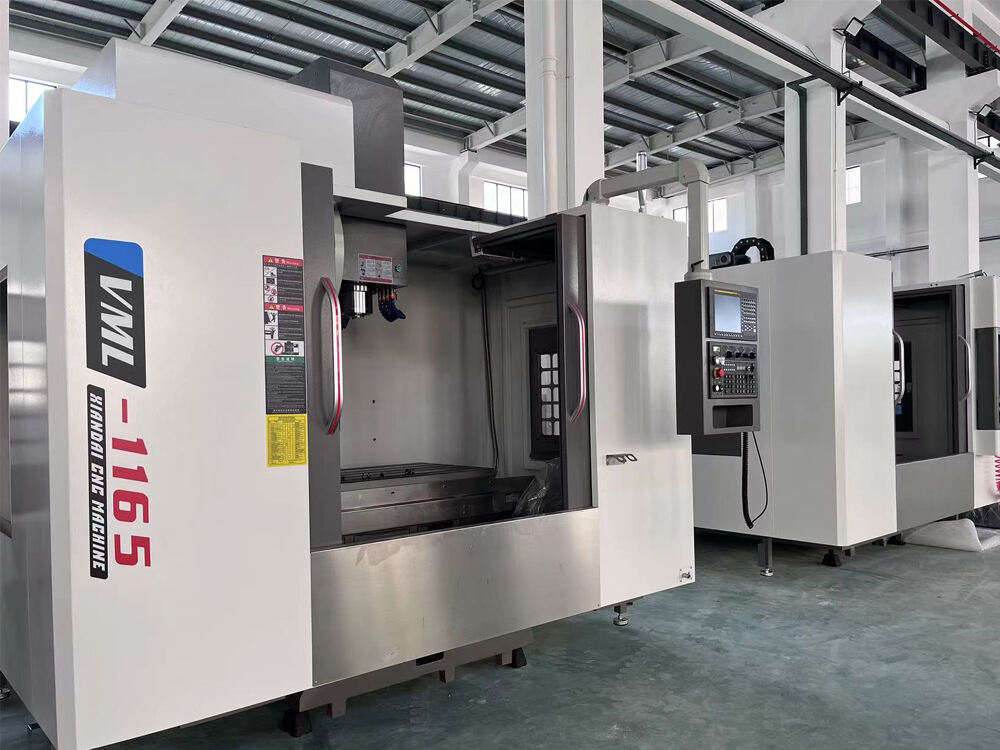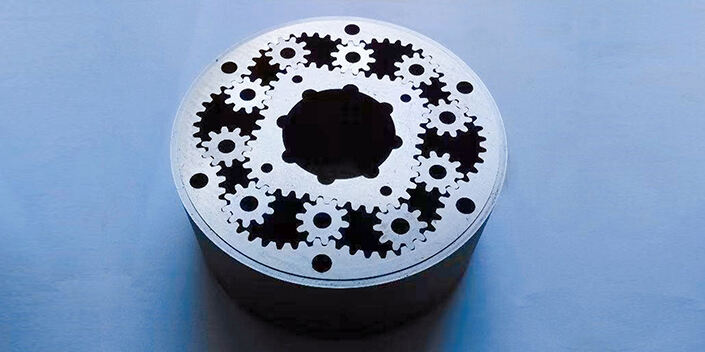How EDM Die Sinking Machines Shape Complex Geometries
Principles of Electrical Discharge Machining (EDM)
EDM works by using electrical sparks to remove material from workpieces positioned between two electrodes. The technique makes it possible to create really complicated shapes that would be tough or impossible with standard cutting tools. Traditional machining requires actual contact between tool and material, which can put stress on fragile components. But with EDM there's no direct touch involved so delicate parts stay intact during processing. The controlled spark erosion process lets manufacturers produce detailed features without warping or distorting the final product. For industries where exact measurements matter most, like aerospace or medical device manufacturing, this non-contact approach gives EDM a clear edge over other machining options when working with hard materials or tight tolerances.
Role of Electrodes in Creating Intricate Forms
In EDM processes, electrodes made primarily of copper or graphite do the heavy lifting when it comes to shaping workpieces into complex forms. For every job, engineers need custom designed electrodes if they want to hit those exact geometry specifications. How these electrodes look and wear down over time really matters for how accurate the final product turns out. Some research shows worn electrodes can throw off measurements, which means shops have to keep an eye on them and replace them regularly to stay within tolerances. Getting the right electrode material and keeping them in good shape isn't just important it's essential for making those detailed parts while keeping the EDM system running properly.
Dielectric Fluid's Impact on Precision
Choosing the right dielectric fluid makes a big difference in how well EDM machines perform, mainly because it controls heat buildup and helps clear away metal chips during operation. Studies have shown that when shops use fluids with just the right electrical characteristics, sparks happen more consistently which lets machinists cut out really detailed features on complicated parts. Keeping an eye on things like conductivity levels and fluid condition throughout production runs matters a lot too, particularly when working on components that need extremely close measurements. Shops that take time to maintain their fluids properly and select the best options for specific jobs tend to get better results overall. Their EDM parts end up looking cleaner and meeting tighter specs than those made with poor fluid management practices.
Types of EDM Machines for Different Applications
Traditional Die Sinking EDM for Basic Molds
The old school die sinking EDM machines remain go-to equipment for producing standard molds, especially when budget matters for straightforward design needs. Basically, they zap away material from the workpiece with controlled electrical sparks, which makes them great for working on tough metals without warping or damaging the piece. Most modern units come equipped with PLC controls these days, so operators can program settings easily and get repeatable outcomes across production runs. What sets these apart from conventional cutting methods is their ability to carve out complex geometries in hardened materials that would break other tools. Toolmakers in aerospace and medical device manufacturing rely heavily on this technology because it delivers both strength and exactness when those factors count most.
CNC-Controlled EDM for High-Accuracy Parts
CNC controlled EDM machines play a key role in making parts with very tight tolerances, offering both great precision and consistent results across multiple runs. These systems use automation to cut down on production time while also reducing mistakes that come from human operators, which makes them much more efficient overall. Studies show some CNC EDM setups can hit tolerances around plus or minus 0.001 inches something that matters a lot in industries like aerospace manufacturing and medical device production where getting measurements right is absolutely critical. When companies want to make complicated components with lots of fine details, these machines give manufacturers peace of mind knowing their products will meet those demanding specs consistently.
Wire EDM for Thin Cuts and Tight Tolerances
Wire EDM machines excel at making very thin cuts and hitting super tight tolerances on all sorts of components. These systems work with a thin wire electrode that acts as the cutting tool, allowing them to create really detailed shapes and features that regular cutting tools just cant reach. The process becomes especially valuable when working on parts that need those razor sharp tolerances. We're talking about specs as tight as plus or minus 0.0005 inches here. That kind of accuracy matters a lot in fields such as medical device manufacturing and electronic component production where even the smallest deviation can cause problems. Because of this incredible level of precision, many manufacturers turn to wire EDM whenever they need to keep those critical dimensional requirements intact throughout production runs.
High-Speed EDM for Production Efficiency
High speed EDM machines boost production efficiency thanks to new tech that makes the discharge process work better. These upgraded systems slash both costs and downtime because they produce complicated parts much faster than older models. Some studies show these machines can cut production time around 30 percent, which is why many shops in tight manufacturing situations are switching to them. After all, saving time means saving money when orders need to be fulfilled quickly. Manufacturers who adopt this technology gain a real edge in their markets since they can deliver large batches of components sooner rather than later, keeping customers happy and competitive pressures at bay.
Key Industries Transformed by EDM Technology
Aerospace: Turbine Blades and Engine Components
EDM technology plays a major role in manufacturing turbine blades and other complicated engine parts within the aerospace field. The level of accuracy needed for these components demands specialized machining methods, which is why EDM remains so important. Wire EDM and die sinking machines handle tough materials without warping them, allowing parts to survive under intense stress conditions that are vital for safe flight operations. Industry data shows that companies adopting EDM solutions have seen faster production times while maintaining consistent quality across batches. Safety remains paramount in aircraft manufacturing, and EDM helps ensure this through its reliable performance characteristics.
Medical: Surgical Tools and Implant Manufacturing
EDM has become really important in making surgical tools and implants within healthcare, especially when exact measurements matter most. The process lets manufacturers create complex parts from tough, body-friendly materials needed for devices that work well inside living tissue. Getting these details right helps cut down on mistakes during operations something multiple research papers have pointed out regarding how EDM's fine manufacturing capabilities make a difference. When doctors perform procedures, they rely on this kind of precision because lives are at stake after all. That's why many hospitals and clinics now depend heavily on EDM technology for their critical medical equipment needs.
Automotive: Injection Molds and Prototyping
Electric discharge machining (EDM) has become a game changer for the automotive sector, particularly when it comes to making injection molds and creating prototype components. The technology really shines at dealing with those intricate shapes that today's car designs require, something traditional methods struggle with. Compared to conventional machining techniques, EDM cuts down on wasted materials and saves precious time during the prototyping phase, according to industry reports. These savings mean shorter production runs and lower costs overall. Manufacturers can respond quicker to changing market needs while maintaining tighter tolerances, which matters a lot in an industry where design specifications keep getting more complicated year after year.
Advantages of EDM for Complex Part Production
Machining Hardened Materials Without Distortion
EDM tech works really well when cutting through tough stuff like tool steel and titanium without messing up their basic structure or how they perform. This matters a lot for industries that need things to last long and not wear down easily. Take a look at what Metalworking News wrote recently about this topic they mentioned how more and more manufacturers are turning to EDM for working with titanium, especially since aerospace companies rely on these materials because they handle stress better than most others. The manufacturing world keeps showing us that EDM makes parts with almost no heat damage, so we end up with components that stay strong and keep all their original qualities even after being machined.
Achieving Sub-Micron Surface Finishes
EDM stands out because it can create surface finishes down to sub-micron levels, something many precision manufacturing jobs absolutely need. Think about aerospace parts where even tiny surface irregularities matter a lot for how well components work together. Studies indicate that EDM actually improves these surface characteristics so much that companies often don't need to do as much finishing work afterward. This cuts down on time spent on secondary operations, which saves money and speeds things up in the factory. Manufacturers who demand really good finish quality tend to prefer EDM over other methods when their specs call for those ultra fine surfaces.
Creating Undercuts and Micro-Scale Features
The fact that EDM cuts without physical contact means it can produce complex undercuts and tiny details that regular machining just cant handle. Engineers working on detailed projects find this really opens things up, especially when making components for gadgets or medical equipment where space is at a premium. Looking at what manufacturers actually need these days, there seems to be growing interest in creating smaller and smaller features on precision parts. The medical device sector alone shows this trend clearly as they push toward miniaturization. EDM stands out because no other method matches its ability to work at such microscopic scales while keeping tight tolerances. For companies trying to stay ahead in tech fields where size matters, EDM isn't just helpful it's practically essential.





